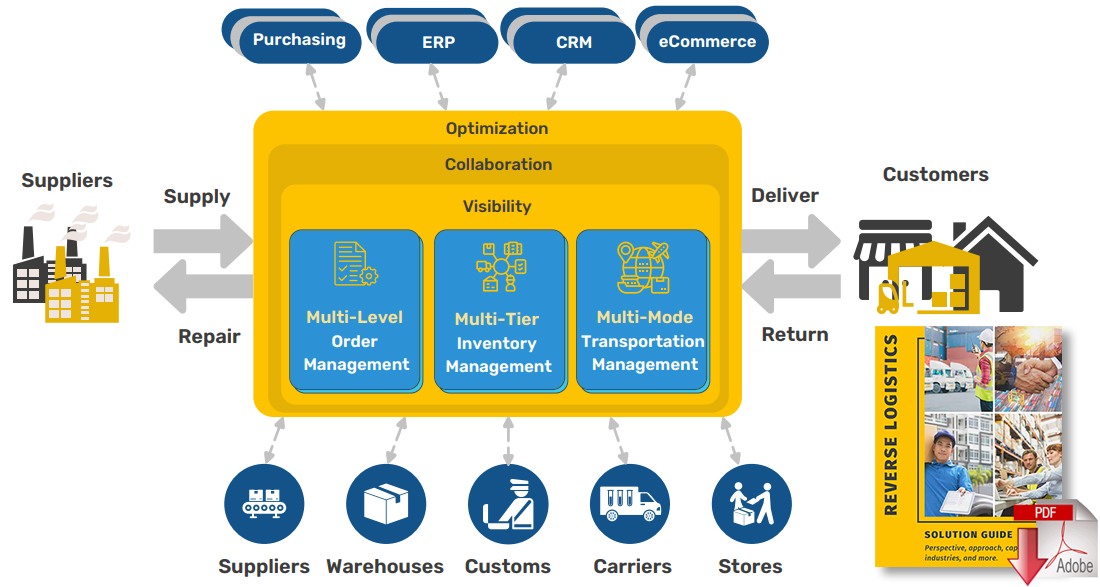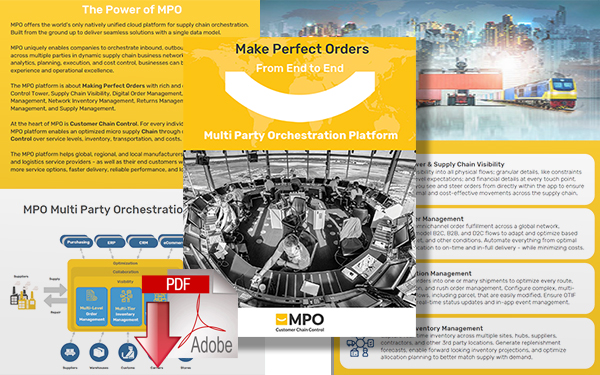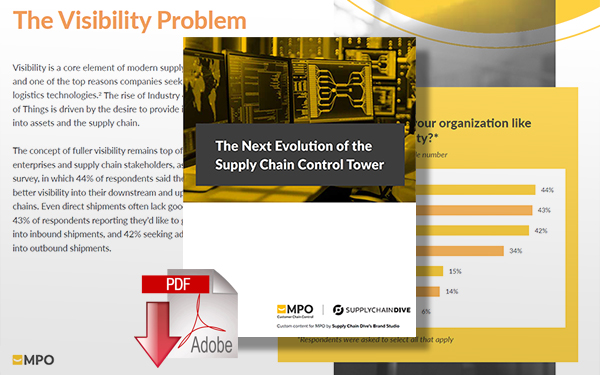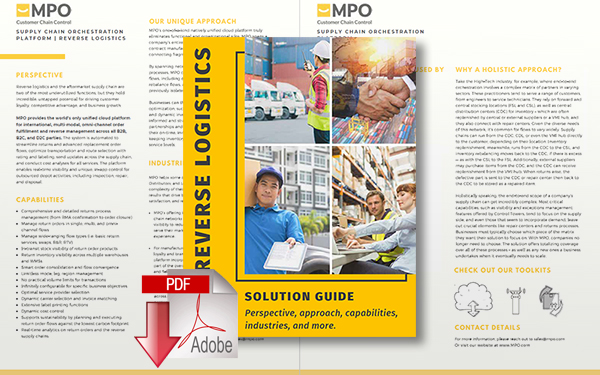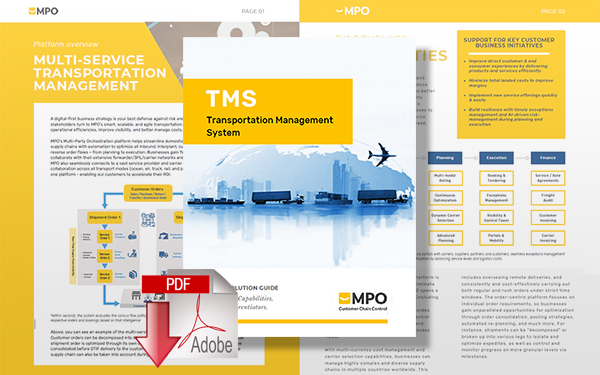6 Critical Challenges in Returns Management & Reverse Logistics that Unlocks Incredible Potential

The costs associated with returns management are about 75% higher than they were just four years ago - and they're projected to keep climbing, land with labor and freight transportation expenses on the rise amid narrow profit margins, manufacturers who invest in reverse logistics can create a significant advantage over the competition.
Reverse Logistics and Returns Management
Reverse logistics and returns management are deeply integrated processes that involve coordinating between multiple enterprises through a series of modalities, including, for example, planning, scheduling and dispatch, product inspections, and refurbishing.
These efforts can become further compounded in the manufacturing sector, where product size, value, and portability, among other qualities, might carry specific logistical constraints.
Returns Management Challenges in the Manufacturing Sector
1. Complex Return Order Flows (watch video)
Reverse supply chains require coordination across multiple business partners and points of origin. Once a product arrives at a Central DC (CDC) or Returns Forwarding Center (RFC), a number of processes are involved in receiving and handling a return, including, for example:
- Verifying the product
- Inspecting the product
- Testing the product
- Potentially troubleshooting on-site or sending the product to a separate facility for repairs
- Repackaging the product so it can be shipped to be put back in inventory or Returned to Vendor (RTV)
- Determining if it would be more cost-effective to scrap or recycle raw materials instead of refurbishing the defective product
Because returns management and reverse logistics involve so many variables, it’s a consistent challenge for manufacturers to manage information flow between silos and track orders.
In such environments, returns management solutions as part of a multi-enterprise supply chain network platform can easily integrate many processes and systems to provide holistic planning and execution, as well as end-to-end visibility and control.
2. Return Merchandise Authorization (RMA)
Reverse supply chains can include multiple levels between the supplier and the customer, and the further removed they are from each other, the more difficult it can be to relay information between the two.
Furthermore, an RMA can arrive via phone, email, or another communication platform, and a returns management system must be able to receive requests from a variety of potential sources. This communication variable calls for fetching and centralizing data from multiple sources, which can be automated through software integration and further facilitated with end-to-end transparency at every transaction point.
During the initial request to return an item, the installer or field engineer responsible for authorizing returns should first try to determine the reason for the return; then, they can attempt to rule out malfunctions caused by installation and misapplication errors. If the problem can be resolved onsite, the vendor can provide an immediate solution for the customer, persuade them not to return the product they purchased, and prevent revenue loss.
If the return is authorized, on the other hand, details about the entitlements, service level expectations, and order constraints can be recorded and taken into account, if the information is relayed appropriately through subsequent events in the returns and reverse logistics channels. This example demonstrates how information flow between enterprises can streamline operations, which gives suppliers more control over preventing returns when possible and improving operational efficiencies.
3. Changing Customer Expectations (watch video)
Customers in B2B and D2C verticals have come to expect many of the same services that are now common in B2C markets and e-retail, including, for example, inventory availability, delivery options, and ‘ease of returns’. Even though many of these features originated with online resellers, manufacturers are increasingly held to the same standards for customer service.
As a result, organizations are motivated to optimize returns management systems in order to accommodate the demand and remain competitive in the market. By meeting or exceeding customer service expectations, including processing returns and remanufacturing orders, organizations can build brand loyalty and customer satisfaction, which can contribute to future sales.
4. Customer Knowledge Gap
If the manufacturer provides information about a product that’s unclear (for example, the technical specifications), they risk having to process excessive returns, even if the product is fully functional. Product selection is another area where customers need guidance to avoid making unnecessary purchases and subsequent returns.
One way to help customers make an informed purchasing decision is to provide detailed inventory catalogs and identification guides. Suppliers may also choose to host informational content online or ship their items with “Quick-Start” product inserts to help boost engagement and reduce user-related errors that may increase returns.
5. Scaling Operations to Meet the Rising Demand (watch video)
Since the pandemic started, individuals across the board have become increasingly reliant on electronics at-home equipment (fitness for example), and appliances. Constant usage accelerates wear and tear, driving up the demand for repair services. To keep pace with increased demand, manufacturers have been motivated to minimize downtime and turnaround by updating legacy processes through automation.
Many reverse supply chains have separate channels for reverse logistics, which involves returning a defective or malfunctioning product, to be inspected and remanufactured or scrapped. Inspection, diagnostics, repairs, testing, etc. are typically outsourced to third-party depots, which can introduce additional levels of complexity.
A supply chain control tower with complete end-to-end visibility and performance monitoring helps reduce segmentation caused by siloing. Automation can streamline the process further by applying smart business rules to align objectives between returns and reverse logistic channels to optimize resources.
6. Waste and Carbon Emission Reduction
Organizations that are trying to reduce carbon emissions and waste have increasingly more options to make their supply chain more sustainable. These efforts focus on the 6 R’s of a circular economy:
- Recover
- Reuse
- Remanufacture
- Recycle
- Redesign
- Reuse
By incorporating these strategies into the reverse supply chain, manufacturers can extend the lifecycle of their products, thereby reducing their demand for new materials. Government mandates and environmental regulations also add incentives for businesses to improve in this area. “Green” supply chain sourcing, transportation, and zero-waste packaging can even be positioned as market differentiators for certain market segments.
Mobilizing Support for Investing in Returns Management
Business leaders might have grown accustomed to treating returns management as an operating expense, but it would be a mistake to overlook the potential for enhancing customer loyalty, cost-saving, and revenue recovery.
The costs associated with returns management are about 75% higher than they were just four years ago. Due to the challenges outlined above, in addition to rising expenses for labor and freight transportation, these numbers are projected to continue climbing. In an environment where profit margins are narrow, any advantage over the competition can become a market differentiator.
Supply chain software, such as multi-enterprise supply chain business network technology can streamline operations by facilitating information flow between partners and providing mechanisms for controlling every detail of the return, from event tracking to warehouse management system (WMS) integration. Performance and financial analytics embedded within the supply chain software even makes it possible to incorporate real-time data into a holistic overall business strategy.
Returns management and reverse logistics are vastly underutilized functions that hold incredible potential for driving differentiation, customer loyalty, and business growth. As part of a global and multi-modal cloud platform for omnichannel order fulfillment and reverse management across B2B, B2C, and D2C parties, the MPO solution automates and streamlines returns and advanced replacement order flows, optimizes transportation and route selection with a smart rating and labeling, sends timely updates across the supply chain, and conducts cost analyses for all services. The holistic platform enables real-time visibility and in-app control for outsourced depot activities, including inspection, repair, and disposal.
Multi-Party Orchestration Platform
Learn more about how the platform can support your initiatives by downloading a copy of the returns management solution guide or by reaching out to [email protected] or requesting a demo today.
About the Author
Vijay Natarajan is a Supply Chain professional with deep and broad experience helping companies overcome real-world challenges by aligning effective business processes with the right solutions.
Related Resources
Multi-Party Orchestration Platform
In this brochure, you'll find a guide to MPO's unified cloud platform for multi-party orchestration, including its rich and flexible solutions: Control Tower, Supply Chain Visibility, Digital Order Management, Transportation Management, Network Inventory Management, Returns Management, Spare Parts Management, and Supply Management. Download Now!
The Next Evolution of the Supply Chain Control Tower
This white paper explores why visibility is a core element of modern supply chain digitization, and a top reason to implement logistics technologies in your supply chain. Download Now!
Reverse Logistics & Returns Management Solution Guide
This guide outlines the benefits and capabilities of the MPO platform, as well as a practical overview of why a unified and converged approach is critical to running an efficient and cost-effective reverse supply chain that drives superior customer satisfaction. Download Now!
Transportation Management System Solution Guide
Access this brief guide to MPO's Transportation Management Solution, benefits, capabilities, and differentiators - including an Order-Centric TMS checklist. Download Now!
More Resources from MPO
Related Article: 3 Ways Transportation Management Systems Have Evolved
Article Topics
MPO News & Resources
TMS+ Go Beyond Transport to Optimize Cost, Service, & Resiliency Multi-Party Orchestration Platform When It Comes to Digital Transformation You May Not Be Doing What You Think How Chief Operating Officers are Achieving Results with Supply Chain Software SPARK Matrix Transportation Management System Software Analyst Report Top Trends Driving Change and Technology Strategy Within Logistics & Transportation Management 5 Key Steps for Optimizing your Last Mile Delivery More MPOLatest in Transportation
A Look at Baltimore’s Key Bridge Collapse—One Month Later Baltimore Continues Bridge Recovery With Opening of New Channel How Shippers Can Prep for Hurricane Season UPS Struggles in First Quarter With Steep Earnings Decline FedEx Announces Plans to Shut Down Four Facilities The Two Most Important Factors in Last-Mile Delivery Most Companies Unprepared For Supply Chain Emergency More Transportation

